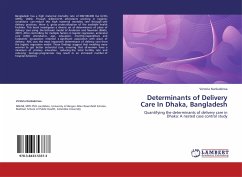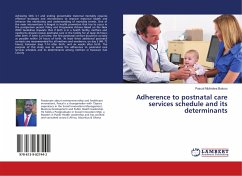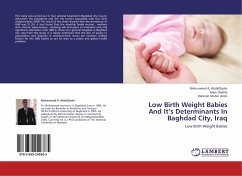
Determinants of Delivery Care In Dhaka, Bangladesh
Quantifying the determinants of delivery care in Dhaka: A nested case control ctudy
Versandkostenfrei!
Versandfertig in 6-10 Tagen
32,99 €
inkl. MwSt.

PAYBACK Punkte
16 °P sammeln!
Bangladesh has a high maternal mortality rate of 300/100,000 live births (WHO, 2004). Though skilled birth attendants working in hygienic conditions can reduce this high maternal mortality rate through safe delivery practices, there is, gross underutilization of the available health facilities. This book investigates a diverse set of determinants of place of delivery care using the behavior model of Andersen and Newman (Baldo, 2001). After controlling for multiple factors in logistic regression, antenatal care (ANC) attendance, age, education, monthly expenditure and husbands occupation retain...
Bangladesh has a high maternal mortality rate of 300/100,000 live births (WHO, 2004). Though skilled birth attendants working in hygienic conditions can reduce this high maternal mortality rate through safe delivery practices, there is, gross underutilization of the available health facilities. This book investigates a diverse set of determinants of place of delivery care using the behavior model of Andersen and Newman (Baldo, 2001). After controlling for multiple factors in logistic regression, antenatal care (ANC) attendance, age, education, monthly expenditure and husbands occupation retained a significant association with place of delivery. ANC was the most important determinant of delivery care from the logistic regression model. These findings suggest that enabling more women to get better antenatal care, ensuring that all women have a minimum of primary education, reducing the total fertility rate and reducing teenage pregnancies may result in an increased number of hospital deliveries.












